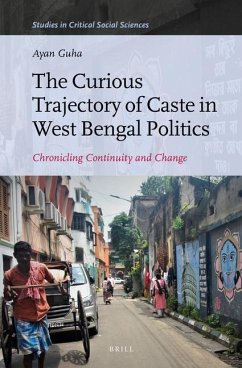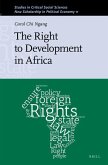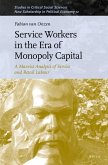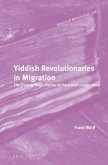- Gebundenes Buch
- Merkliste
- Auf die Merkliste
- Bewerten Bewerten
- Teilen
- Produkt teilen
- Produkterinnerung
- Produkterinnerung
The Curious Trajectory of Caste in West Bengal Politics: Chronicling Continuity and Change critically engages with the political dynamics of caste in West Bengal and explores the reasons for the relative insignificance of caste as a political category in the state.
Andere Kunden interessierten sich auch für
![The Right to Development in Africa The Right to Development in Africa]() Carol Chi NgangThe Right to Development in Africa185,99 €
Carol Chi NgangThe Right to Development in Africa185,99 €![Service Workers in the Era of Monopoly Capital Service Workers in the Era of Monopoly Capital]() Fabian van OnzenService Workers in the Era of Monopoly Capital182,99 €
Fabian van OnzenService Workers in the Era of Monopoly Capital182,99 €![Journal Of The National Indian Association, In Aid Of Social Progress In India Journal Of The National Indian Association, In Aid Of Social Progress In India]() AnonymousJournal Of The National Indian Association, In Aid Of Social Progress In India39,99 €
AnonymousJournal Of The National Indian Association, In Aid Of Social Progress In India39,99 €![Intellectual and Manual Labour Intellectual and Manual Labour]() Alfred Sohn-RethelIntellectual and Manual Labour165,99 €
Alfred Sohn-RethelIntellectual and Manual Labour165,99 €![Urban Movements and Their Impact on Spatial Transformation Urban Movements and Their Impact on Spatial Transformation]() Cumhur OlcarUrban Movements and Their Impact on Spatial Transformation151,99 €
Cumhur OlcarUrban Movements and Their Impact on Spatial Transformation151,99 €![Alberto Flores Galindo Alberto Flores Galindo]() Carlos AguirreAlberto Flores Galindo106,99 €
Carlos AguirreAlberto Flores Galindo106,99 €![Yiddish Revolutionaries in Migration Yiddish Revolutionaries in Migration]() Frank WolffYiddish Revolutionaries in Migration329,99 €
Frank WolffYiddish Revolutionaries in Migration329,99 €-
-
-
The Curious Trajectory of Caste in West Bengal Politics: Chronicling Continuity and Change critically engages with the political dynamics of caste in West Bengal and explores the reasons for the relative insignificance of caste as a political category in the state.
Produktdetails
- Produktdetails
- Verlag: Brill
- Seitenzahl: 312
- Erscheinungstermin: 30. September 2022
- Englisch
- Gewicht: 643g
- ISBN-13: 9789004511811
- ISBN-10: 9004511814
- Artikelnr.: 63629073
- Herstellerkennzeichnung
- Libri GmbH
- Europaallee 1
- 36244 Bad Hersfeld
- gpsr@libri.de
- Verlag: Brill
- Seitenzahl: 312
- Erscheinungstermin: 30. September 2022
- Englisch
- Gewicht: 643g
- ISBN-13: 9789004511811
- ISBN-10: 9004511814
- Artikelnr.: 63629073
- Herstellerkennzeichnung
- Libri GmbH
- Europaallee 1
- 36244 Bad Hersfeld
- gpsr@libri.de
Acknowledgements
List of Tables
1 Introduction Setting the Agenda of Analysis
1 Posing the Problem: West Bengal’s Exceptionalism
2 Contemporary Critiques of West Bengal’s Exceptionalism
3 Research Rationale
4 Thematic Outline and Approach
2 Caste and Nature of Political Mobilization Emerging Trends
1 Rise of the Matua Factor
2 bjp’s Matua Outreach: A New Relationship
3 ‘Politics of Memory’ and Political Narrative
4 Contextualising Dalit Mobilisation in West Bengal
5 Interplay of Memory and Politics at the Grassroots
3 Analysing Patterns of Political Representation Continuity or Change
1 Explaining ‘Rise of Caste’ Hypothesis
2 Two Concepts of Representation: A Brief Theoretical Exploration
3 Mapping Trends of Political Representation in West Bengal
4 Decoding Political Outlook towards Representation
4 Caste and Politics of Numbers Delving Deep into Demography
1 Demographic Fragmentation of Caste Groups
2 Geographic Concentration of Caste Groups
3 Demography and Political Aggregation of Caste Interests
5 Material Basis of Caste Putting Political Economy into Perspective
1 Caste and Economic Aspects of Identity Politics
2 Caste Identity and Patterns of Landholding
3 Caste and Relative Deprivation
4 Land and Agrarian Politics
5 Other Economic Indicators
6 Economic Development and Politics of Caste Coalition
6 Micro-politics in Rural Society Social Imagination, Political Culture and
Economic Reality at the Grassroots
1 Existing Findings about Micro-Dynamics of Caste in West Bengal: An
Overview
2 A Note on Methodology
3 Geography and Demography of the Village under Study
4 Caste and Class: Converging, Diverging and Intersecting Identities
5 Cultural Dynamics of Caste
6 Locating Caste in Politics at the Grassroots
7 Summing Up
7 Unmasking Political Culture Workings of Cultural Dynamics in Mainstream
Politics
1 Bhadralok: Decoding the Sociological Category
2 Emergence and Evolution of the Bhadralok
3 From Culture to Politics: Tracing the Roots of Bhadralok Hegemony
4 Dynamics of a Discourse: Political Culture in Operation
5 Break from Past: Towards a ‘Critical Juncture’?
8 Conclusion Summing Up
Bibliography
Index
List of Tables
1 Introduction Setting the Agenda of Analysis
1 Posing the Problem: West Bengal’s Exceptionalism
2 Contemporary Critiques of West Bengal’s Exceptionalism
3 Research Rationale
4 Thematic Outline and Approach
2 Caste and Nature of Political Mobilization Emerging Trends
1 Rise of the Matua Factor
2 bjp’s Matua Outreach: A New Relationship
3 ‘Politics of Memory’ and Political Narrative
4 Contextualising Dalit Mobilisation in West Bengal
5 Interplay of Memory and Politics at the Grassroots
3 Analysing Patterns of Political Representation Continuity or Change
1 Explaining ‘Rise of Caste’ Hypothesis
2 Two Concepts of Representation: A Brief Theoretical Exploration
3 Mapping Trends of Political Representation in West Bengal
4 Decoding Political Outlook towards Representation
4 Caste and Politics of Numbers Delving Deep into Demography
1 Demographic Fragmentation of Caste Groups
2 Geographic Concentration of Caste Groups
3 Demography and Political Aggregation of Caste Interests
5 Material Basis of Caste Putting Political Economy into Perspective
1 Caste and Economic Aspects of Identity Politics
2 Caste Identity and Patterns of Landholding
3 Caste and Relative Deprivation
4 Land and Agrarian Politics
5 Other Economic Indicators
6 Economic Development and Politics of Caste Coalition
6 Micro-politics in Rural Society Social Imagination, Political Culture and
Economic Reality at the Grassroots
1 Existing Findings about Micro-Dynamics of Caste in West Bengal: An
Overview
2 A Note on Methodology
3 Geography and Demography of the Village under Study
4 Caste and Class: Converging, Diverging and Intersecting Identities
5 Cultural Dynamics of Caste
6 Locating Caste in Politics at the Grassroots
7 Summing Up
7 Unmasking Political Culture Workings of Cultural Dynamics in Mainstream
Politics
1 Bhadralok: Decoding the Sociological Category
2 Emergence and Evolution of the Bhadralok
3 From Culture to Politics: Tracing the Roots of Bhadralok Hegemony
4 Dynamics of a Discourse: Political Culture in Operation
5 Break from Past: Towards a ‘Critical Juncture’?
8 Conclusion Summing Up
Bibliography
Index
Acknowledgements
List of Tables
1 Introduction Setting the Agenda of Analysis
1 Posing the Problem: West Bengal’s Exceptionalism
2 Contemporary Critiques of West Bengal’s Exceptionalism
3 Research Rationale
4 Thematic Outline and Approach
2 Caste and Nature of Political Mobilization Emerging Trends
1 Rise of the Matua Factor
2 bjp’s Matua Outreach: A New Relationship
3 ‘Politics of Memory’ and Political Narrative
4 Contextualising Dalit Mobilisation in West Bengal
5 Interplay of Memory and Politics at the Grassroots
3 Analysing Patterns of Political Representation Continuity or Change
1 Explaining ‘Rise of Caste’ Hypothesis
2 Two Concepts of Representation: A Brief Theoretical Exploration
3 Mapping Trends of Political Representation in West Bengal
4 Decoding Political Outlook towards Representation
4 Caste and Politics of Numbers Delving Deep into Demography
1 Demographic Fragmentation of Caste Groups
2 Geographic Concentration of Caste Groups
3 Demography and Political Aggregation of Caste Interests
5 Material Basis of Caste Putting Political Economy into Perspective
1 Caste and Economic Aspects of Identity Politics
2 Caste Identity and Patterns of Landholding
3 Caste and Relative Deprivation
4 Land and Agrarian Politics
5 Other Economic Indicators
6 Economic Development and Politics of Caste Coalition
6 Micro-politics in Rural Society Social Imagination, Political Culture and
Economic Reality at the Grassroots
1 Existing Findings about Micro-Dynamics of Caste in West Bengal: An
Overview
2 A Note on Methodology
3 Geography and Demography of the Village under Study
4 Caste and Class: Converging, Diverging and Intersecting Identities
5 Cultural Dynamics of Caste
6 Locating Caste in Politics at the Grassroots
7 Summing Up
7 Unmasking Political Culture Workings of Cultural Dynamics in Mainstream
Politics
1 Bhadralok: Decoding the Sociological Category
2 Emergence and Evolution of the Bhadralok
3 From Culture to Politics: Tracing the Roots of Bhadralok Hegemony
4 Dynamics of a Discourse: Political Culture in Operation
5 Break from Past: Towards a ‘Critical Juncture’?
8 Conclusion Summing Up
Bibliography
Index
List of Tables
1 Introduction Setting the Agenda of Analysis
1 Posing the Problem: West Bengal’s Exceptionalism
2 Contemporary Critiques of West Bengal’s Exceptionalism
3 Research Rationale
4 Thematic Outline and Approach
2 Caste and Nature of Political Mobilization Emerging Trends
1 Rise of the Matua Factor
2 bjp’s Matua Outreach: A New Relationship
3 ‘Politics of Memory’ and Political Narrative
4 Contextualising Dalit Mobilisation in West Bengal
5 Interplay of Memory and Politics at the Grassroots
3 Analysing Patterns of Political Representation Continuity or Change
1 Explaining ‘Rise of Caste’ Hypothesis
2 Two Concepts of Representation: A Brief Theoretical Exploration
3 Mapping Trends of Political Representation in West Bengal
4 Decoding Political Outlook towards Representation
4 Caste and Politics of Numbers Delving Deep into Demography
1 Demographic Fragmentation of Caste Groups
2 Geographic Concentration of Caste Groups
3 Demography and Political Aggregation of Caste Interests
5 Material Basis of Caste Putting Political Economy into Perspective
1 Caste and Economic Aspects of Identity Politics
2 Caste Identity and Patterns of Landholding
3 Caste and Relative Deprivation
4 Land and Agrarian Politics
5 Other Economic Indicators
6 Economic Development and Politics of Caste Coalition
6 Micro-politics in Rural Society Social Imagination, Political Culture and
Economic Reality at the Grassroots
1 Existing Findings about Micro-Dynamics of Caste in West Bengal: An
Overview
2 A Note on Methodology
3 Geography and Demography of the Village under Study
4 Caste and Class: Converging, Diverging and Intersecting Identities
5 Cultural Dynamics of Caste
6 Locating Caste in Politics at the Grassroots
7 Summing Up
7 Unmasking Political Culture Workings of Cultural Dynamics in Mainstream
Politics
1 Bhadralok: Decoding the Sociological Category
2 Emergence and Evolution of the Bhadralok
3 From Culture to Politics: Tracing the Roots of Bhadralok Hegemony
4 Dynamics of a Discourse: Political Culture in Operation
5 Break from Past: Towards a ‘Critical Juncture’?
8 Conclusion Summing Up
Bibliography
Index








